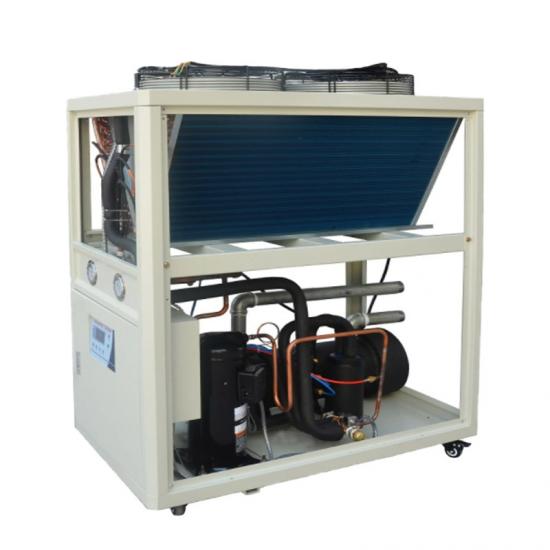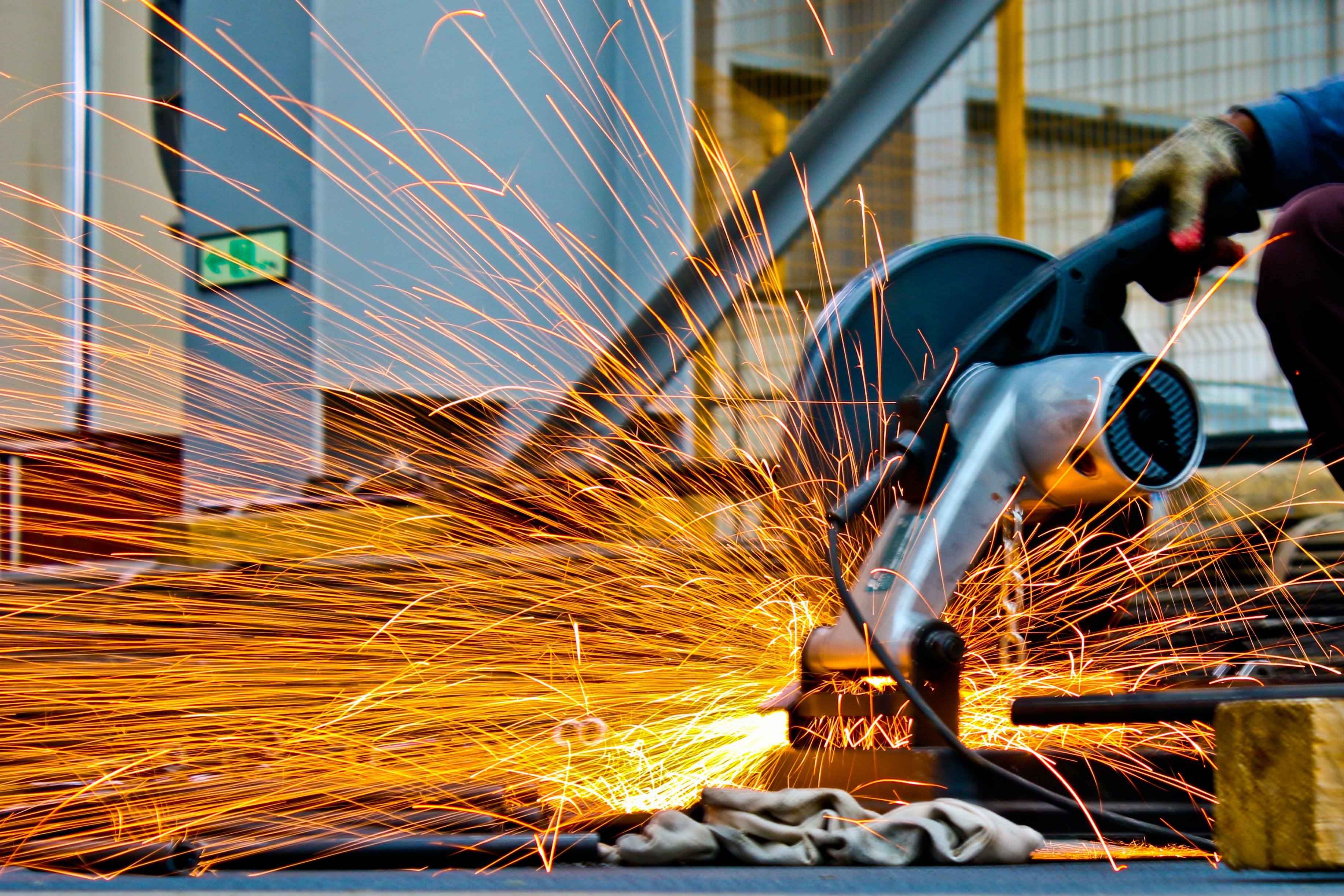Choosing the right chiller helps your injection molding work well. You must match cooling power, temperature control, and chiller type to your machine. First, learn what cooling you need and what kind of injection molding machine you have. Look at energy efficiency when you check injection molding chillers. These steps help you save money and keep production running smoothly.
key Takeaways
-
Find out how much heat your machine makes. Add a little extra to be safe. Pick a chiller that can cool enough.
-
Pick the best chiller type for your needs. Air-cooled chillers are easy to set up. Water-cooled chillers work better if you have water.
-
Keep the temperature steady. This helps you make good parts and waste less.
-
Make sure your chiller is the right size. Install it the right way. This helps stop problems and keeps things working well.
-
Talk to experts if you need help. Use tools like calculators to help you pick the best chiller.
Cooling Needs
You need to know how much heat your injection molding machine creates. The heat load tells you how much cooling power you need. When you melt plastic, the machine produces a lot of heat. You must remove this heat quickly to keep the process stable. If you choose a chiller that cannot handle the heat load, your parts may not form right. You can ask your machine supplier for the heat load value. You can also use online calculators to estimate it. Always add a safety margin to your calculation. This helps you avoid problems during peak production.
Machine Size & Cycle Time
The size of your machine and how fast it runs both affect your cooling needs. Large machines need more cooling. Machines with short cycle times also need more cooling because they work faster. If you run many cycles per hour, your chiller must keep up. You should check the tonnage of your machine and the average cycle time. Make a list of all machines if you use more than one. This helps you pick the right injection molding chillers for your setup.
Tip:Write down your machine size and cycle time before you start looking for a chiller. This makes the selection process easier.
Ambient Conditions
The temperature and humidity in your factory change how well your chiller works. Hot or humid air makes it harder for the chiller to cool your machine. If your factory gets very hot in summer, you may need a bigger chiller. You should also think about where you will place the chiller. Some chillers work better indoors, while others work better outside. Always check the chiller’s performance in your local climate.

Air-cooled vs.Water-cooled
There are two main types of injection molding chillers. One type is air-cooled. The other type is water-cooled. Air-cooled chillers use fans to move air over coils. This helps take away heat from the machine. You can put air-cooled chillers almost anywhere. They do not need extra water to work. These chillers are good if water is costly or hard to find. Water-cooled chillers use water to get rid of heat. You must have a steady water supply for them. Sometimes, you also need a cooling tower. Water-cooled chillers are usually quieter. They can last longer than air-cooled chillers. They work best in big factories with good water systems.
Tip:Pick air-cooled chillers if you want an easy setup. Choose water-cooled chillers for better efficiency and if you have water.
Central vs. Portable
You can choose central or portableinjection molding chillers. Central chillers cool many machines at the same time. You put them in one place and connect all your machines. This saves space and makes it easier to fix them. Portable chillers can move from one machine to another. Use them if you only need to cool one machine. They are good if you want to move them around.
Hydraulic vs. Electric Machines
The kind of machine you have is important. Hydraulic machines use oil to move their parts. They make more heat than electric machines. These machines need stronger chillers. Electric machines use motors and make less heat. You can use smaller chillers with electric machines. Always match the chiller to your machine type for the best results.
Note: Look at your machine’s manual to see which chiller is best.
Selection Criteria
You need a chiller that can cool your machine enough. Cooling capacity is how much heat the chiller can take away in a certain time. If the chiller is too small, your machine might get too hot. This can make your molded parts turn out wrong. Always check your injection molding machine’s heat load. Add a little extra to be safe during busy times. Most suppliers show cooling capacity in tons or kilowatts. Make sure the chiller meets or goes above what you need.
Tip:Write down your machine’s heat load and compare it to the chiller’s rated capacity before you buy.
Maintenance and Uptime
Taking care of your chiller is important for smooth work. Water-based systems often need less cleaning because they do not get dirty as fast. Easy maintenance means your machines can run longer without stopping. Good chillers have strong parts and smart controls. These help you stop breakdowns and keep your factory working. Your maintenance team should check, clean, and fix the chiller often. This keeps your injection molding chillers working well and cuts down on stops.
Maintenance teams must:
- Fix chillers fast when there is a problem.
- Do regular checks to stop problems before they start.
- Work with operators to solve issues quickly.
- Follow safety rules and keep good records.
- Learn about new systems and controls.

Sizing Steps
You need to size your chiller correctly to keep your machines running well. Start by finding the heat load for each machine. Write down the number you get from your machine manual or supplier. Add up the heat loads if you have more than one machine. Always include a safety margin of 10-20% to cover extra heat during busy times.
Follow these steps to size your chiller:
-
List all machines that need cooling.
-
Find the heat load for each machine.
-
Add the heat loads together.
-
Add a safety margin.
-
Choose a chiller with a cooling capacity that matches or exceeds your total.
Installation Needs
Proper installation keeps your chiller working well. Place the chiller on a flat, strong surface. Make sure there is enough space around it for air flow and maintenance. Connect all pipes and wires as the manual shows. Use clean water if you have a water-cooled chiller. Check for leaks after you finish.
You should also:
-
Keep the chiller away from dust and heat sources.
-
Make sure power supply matches the chiller’s needs.
-
Train your team on how to use and check the chiller.
It is smart to look at different chillers before you buy. First, check the main features of each one. Look at cooling capacity, temperature control, and condenser type. Make a list of brands that match what you need. You can use a table to keep your notes organized:
| BrandA | 10 tons | ±0.1℃ | Air-cooled | 2 years |
| Brand B | 12 tons | ±0.2℃ | Water-cooled | 3 years |
| Brand C | 10 tons | ±0.1℃ | Air-cooled | 1 year |
Read reviews from other people who use these chillers. Ask if they are reliable and if spare parts are easy to find. This helps you avoid trouble later.
Budget & Quality
You need to think about both price and quality. Do not pick the cheapest chiller if it will not work well. Cheap chillers may break more or use more energy. Good chillers last longer and save money in the long run. Check the warranty and after-sales help. Good support can save you time and stress. Make sure you know the full cost, including setup and care.
Tip:Spending a bit more at first can save money on repairs and energy later.
It is a good idea to talk to experts before you buy. Find people who know about injection molding machines and extra equipment. They should know about chillers, thermolators, and resin dryers. Experts can help you pick the right chiller and plan for care. They can also help if something breaks. Experts often work with maintenance teams to keep things running. They know how to make cycle times better and cut down on waste. This help lets you get the most from your new chiller.
When you ask for expert help, look for:
- Real experience with the equipment
- Skill at fixing problems
- Ability to judge what to buy
- Teamwork with maintenance and production
- Ideas for making things work better
You can pick the right chiller by following some easy steps. First, make sure you size the chiller correctly. Keep the temperature steady for good results. Choose a chiller type that fits your machine’s needs. Use a checklist so you do not forget anything. If your project is hard, ask a professional for help.
FAQ
What size chiller do you need for your injection molding machine?
You need a chiller that matches your machine’s heat load. Check your machine manual for the heat load value. Add a safety margin of 10–20%. This helps your chiller handle busy times without problems.
How often should you maintain your chiller?
You should check your chiller every month. Clean filters and inspect for leaks. Schedule a full service at least once a year. Regular care keeps your chiller running well and helps you avoid breakdowns.
Can you use one chiller for multiple machines?
Yes, you can use a central chiller for several machines. Make sure the chiller’s total cooling capacity covers all machines. List each machine’s heat load and add them together before choosing your chiller.
What is the difference between air-cooled and water-cooled chillers?
Air-cooled chillers use fans to remove heat. You do not need extra water. Water-cooled chillers use water and often need a cooling tower. Water-cooled models work better in hot places and usually last longer.
